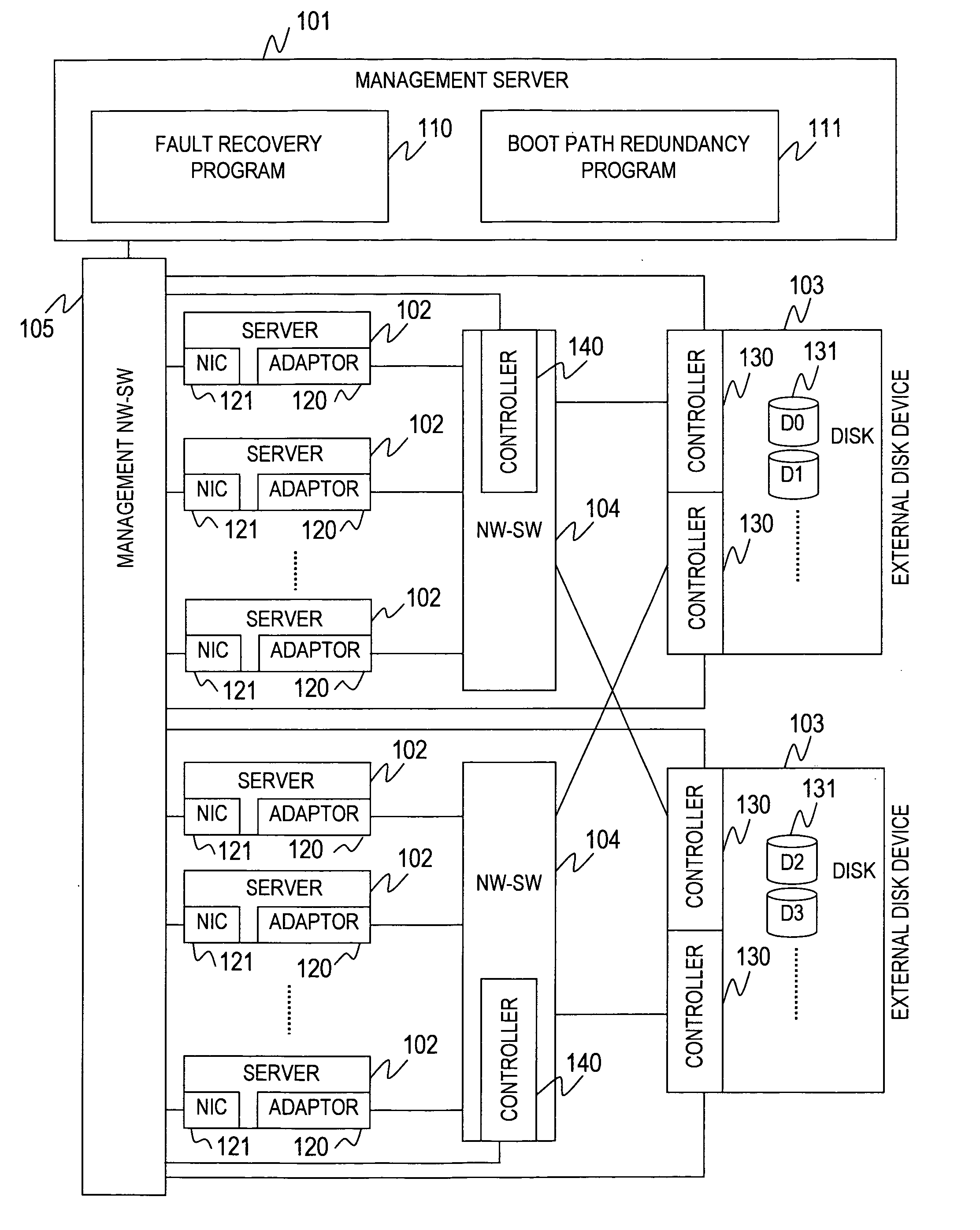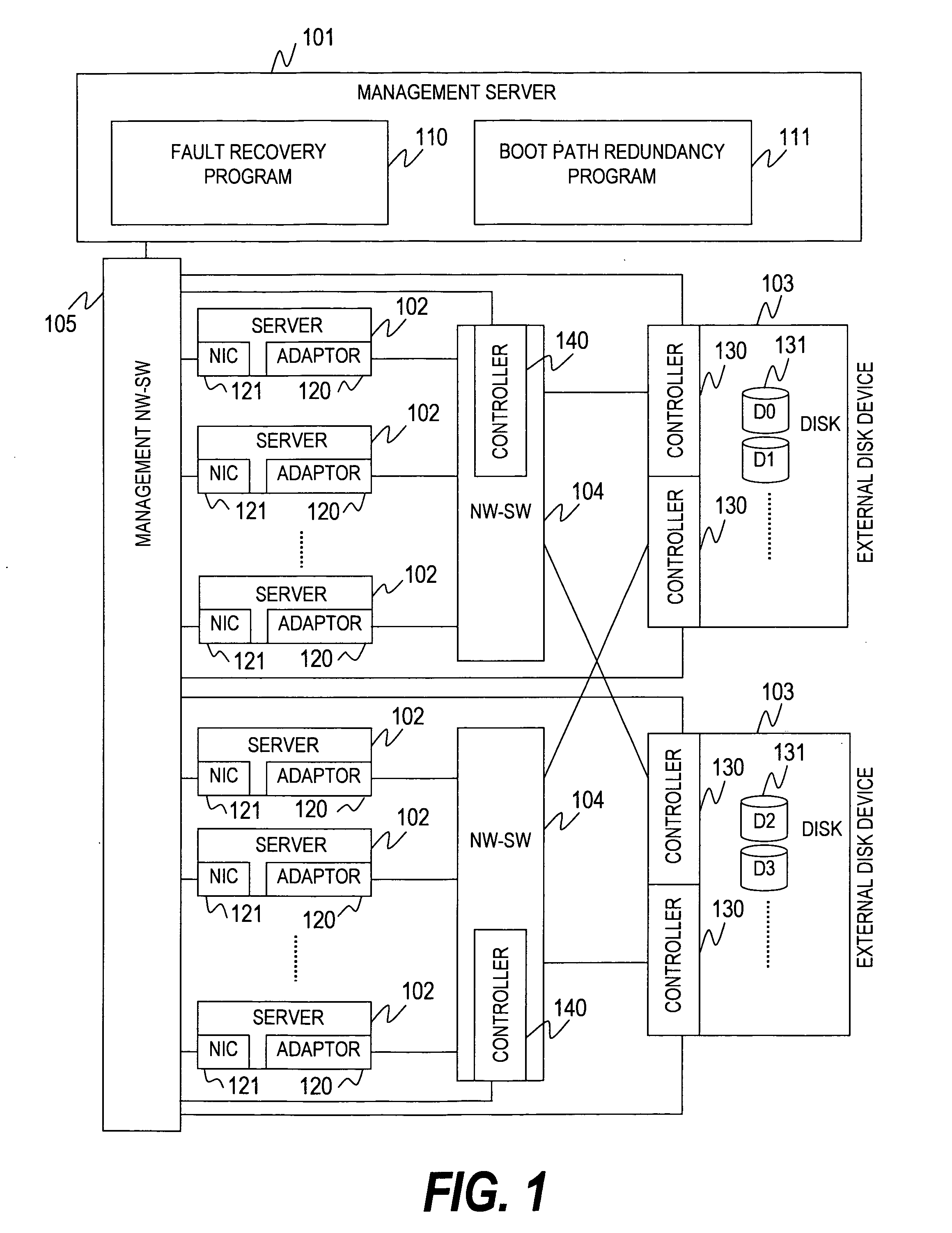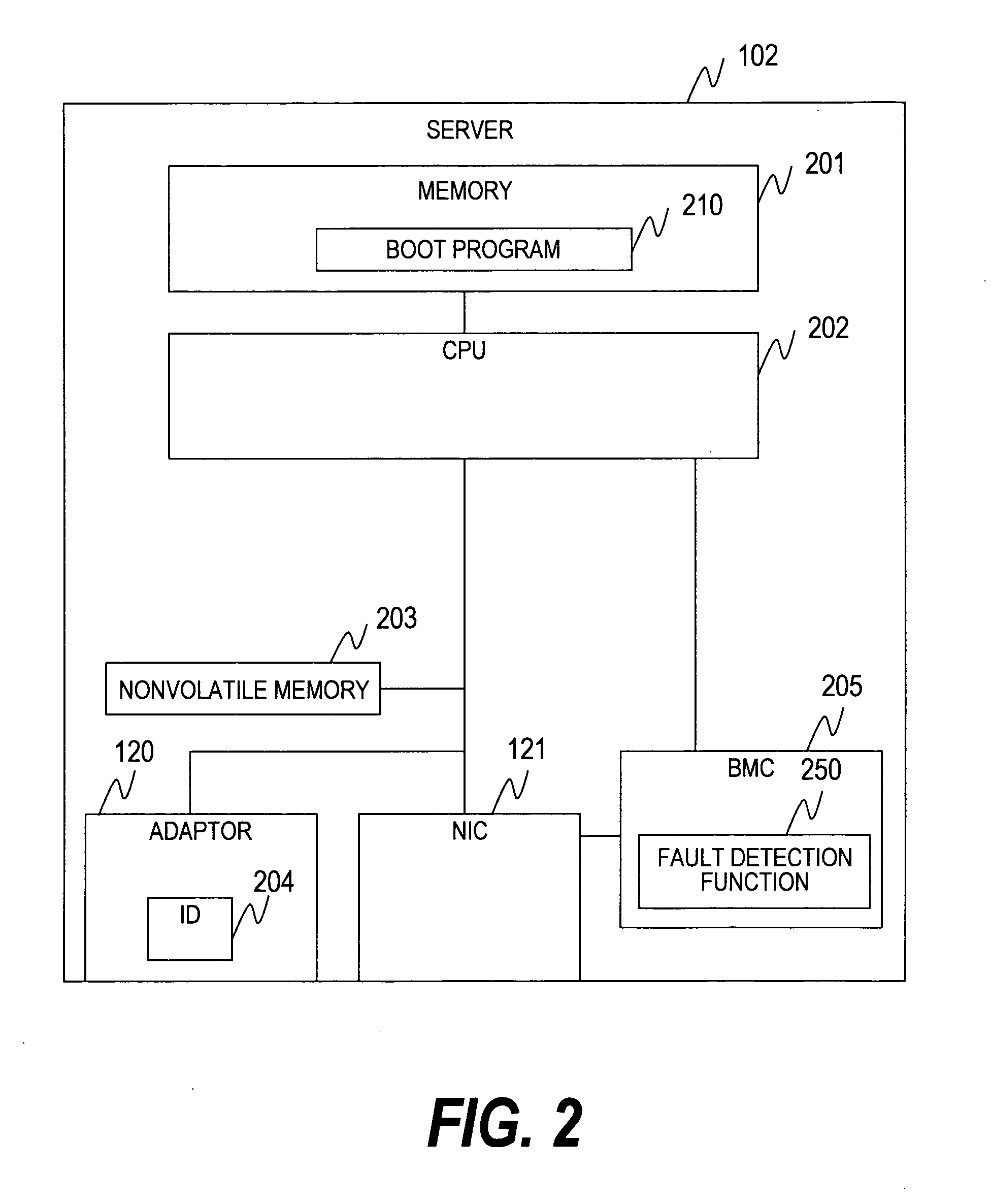Method of achieving high reliability of network boot computer system
a network boot and computer system technology, applied in the field of network boot computer system high reliability, can solve the problems of both servers going down together, server that should take over the boot disk may not be able to access the boot disk, and achieve the effect of reducing the workload of the system manager
- Summary
- Abstract
- Description
- Claims
- Application Information
AI Technical Summary
Benefits of technology
Problems solved by technology
Method used
Image
Examples
first embodiment
[0045]FIG. 1 is a block diagram showing a configuration of a computer system according to this invention.
[0046]The computer system of this embodiment includes a management server 101, a plurality of servers 102, a plurality of external disk devices 103, a plurality of network switches (NW-SW) 104, and a management network switch (management NW-SW) 105.
[0047]Each server 102 includes a network interface card (NIC) 121 connected to the management NW-SW 105, and a network adaptor (referred to as adaptor) 120 connected to the NW-SW 104.
[0048]The NW-SW 104 constitutes a network for interconnecting the server 102 and the external disk device 103. The NW-SW 104 may be a switch for handling Ethernet protocol, a switch of a fibre channel, or a network switch of another kind.
[0049]The management NW-SW 105 constitutes a network for interconnecting the management server 101, the server 102, the external disk device 103, and the NW-SW 104. As in the case of the NW-SW 104, the management NW-SW 105...
second embodiment
[0276]Next, this invention will be described.
[0277]The second embodiment of this invention is different from the first embodiment in that the disk synchronization program shown in FIG. 9 is not present. Only differences of the second embodiment from the first embodiment will be described below.
[0278]FIG. 21 is an explanatory diagram showing mirroring executed according to the second embodiment of this invention.
[0279]To be specific, FIG. 21 shows a method of synchronizing contents of disks 2130 and 2131 between two different external disk devices 2120 and 2121, and storing the same disk image D0.
[0280]A sever 102 of this embodiment includes a mirroring program 2100.
[0281]When a CPU 2110 executes a writing command 2111 to write data in a disk 2130, the mirroring program 2100 writes data in the disk 2130 and the same data in a disk 2131. Accordingly, updating of the disk 2130 by the server 102 is always applied to the disk 2131, and the disks 2130 and 2131 match each other in contents...
third embodiment
[0291]Next, this invention will be described.
[0292]The third embodiment of this invention is different from the first embodiment in that the disk synchronization program shown in FIG. 9 is not present, and from the second embodiment in that the mirroring program shown in FIG. 21 is not present.
[0293]FIG. 23 is an explanatory diagram showing synchronous disk creation executed according to the third embodiment of this invention.
[0294]To be specific, FIG. 23 shows a method of synchronizing contents of disks 2320 and 2321 between two different external disk devices 2310 and 2311 to store the same disk image D0 according to this embodiment.
[0295]According to this embodiment, one of serves 102 of a computer system becomes a synchronous server 2301. The synchronous server 2301 includes a synchronization program 2300. The synchronous server 2301 may be a server 102 engaged in application or not engaged in application. The synchronous server 2301 can access disks 2320 and 2321 via an adaptor...
PUM
 Login to View More
Login to View More Abstract
Description
Claims
Application Information
 Login to View More
Login to View More - R&D
- Intellectual Property
- Life Sciences
- Materials
- Tech Scout
- Unparalleled Data Quality
- Higher Quality Content
- 60% Fewer Hallucinations
Browse by: Latest US Patents, China's latest patents, Technical Efficacy Thesaurus, Application Domain, Technology Topic, Popular Technical Reports.
© 2025 PatSnap. All rights reserved.Legal|Privacy policy|Modern Slavery Act Transparency Statement|Sitemap|About US| Contact US: help@patsnap.com



